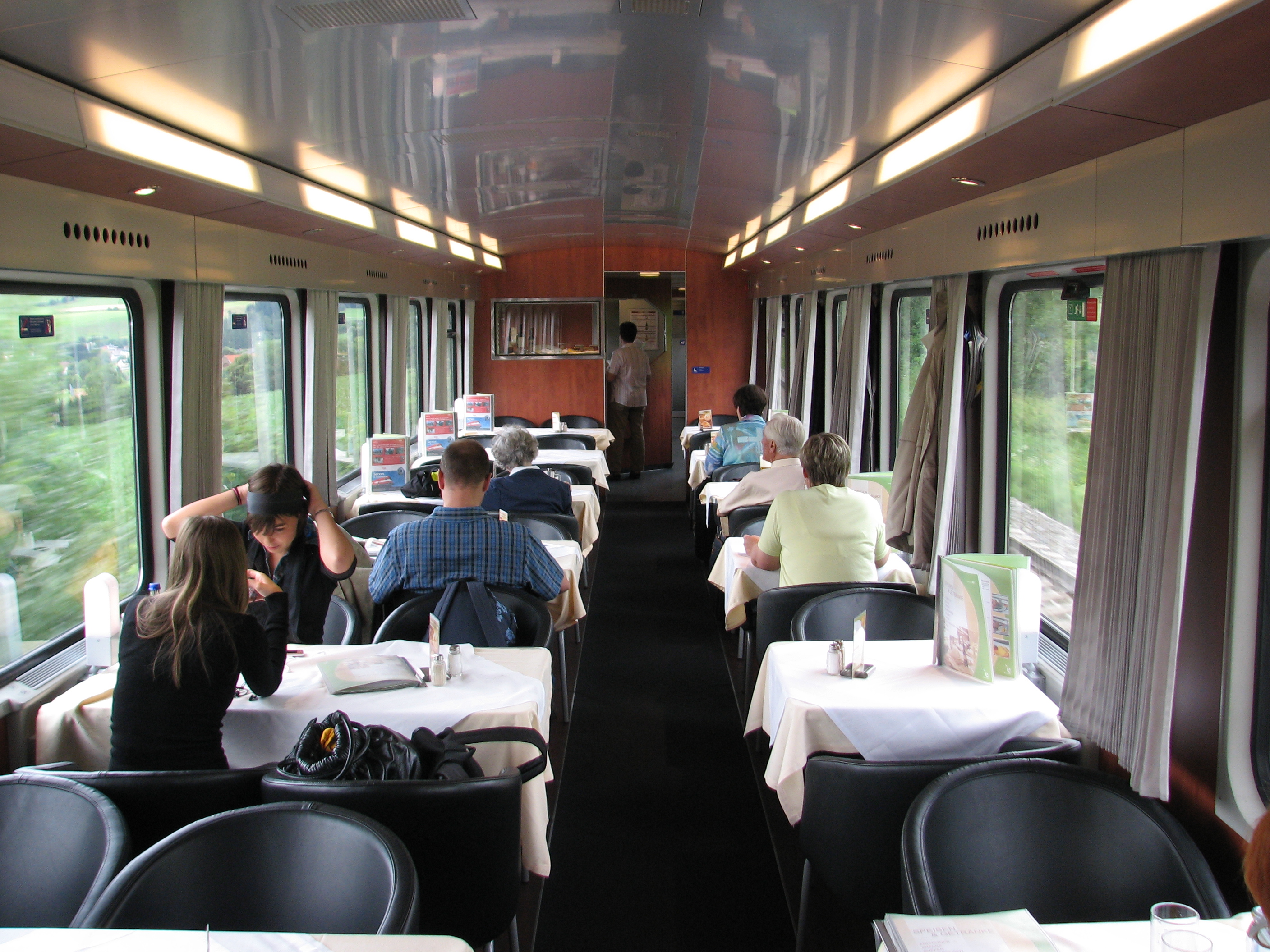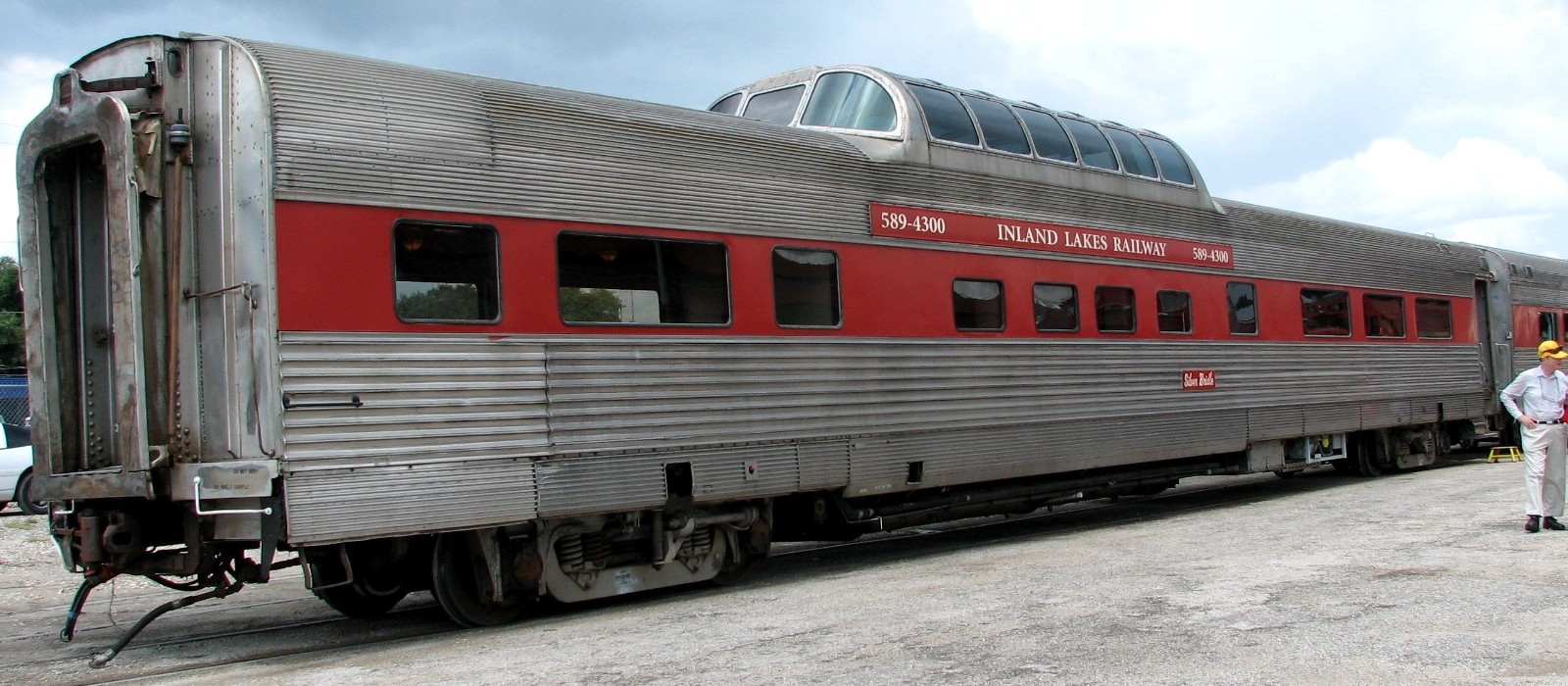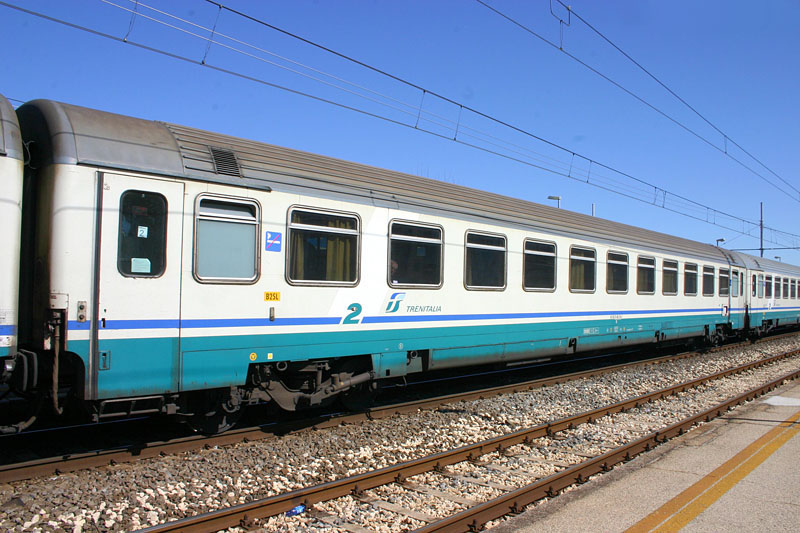|
City Of Portland (train)
The ''City of Portland'' was a named passenger train on the Union Pacific Railroad between Chicago, Illinois, and Portland, Oregon. The first trip left Portland on June 6, 1935, using the streamlined M-10001 trainset. With only one set of equipment, the train left each terminal six times a month. A broken axle derailed the trip that left Chicago on July 23, 1935, and the repaired train resumed service with the trip leaving Portland on February 6, 1936. In May 1936 it started running five times a month instead of six, allowing more time in Chicago between trips. (In July 1935 it was scheduled to arrive Chicago at 9:30 AM and leave at 6:15 PM the same day.) It was the first streamliner with sleeping cars and the first streamliner running from Chicago to the Pacific coast; its 39-hour-45-minute schedule became the standard. (In April 1935 the fastest train took 59 hr 20 min Chicago to Portland.) The M-10001 was withdrawn in March 1938 and replaced with another articulated train ... [...More Info...] [...Related Items...] OR: [Wikipedia] [Google] [Baidu] |
Drumhead (sign)
The term drumhead refers to a type of removable sign that was prevalent on North American Rail transport, railroads of the first half of the 20th century. The sign was mounted at the rear of Lists of named passenger trains, named passenger trains, and consisted of a box with internal illumination that shone through a tinted panel bearing the logo of the railroad or specific train. Since the box and the sign were usually circular in shape and resembled small drums, they came to be known as drumheads. Railroad drumheads were removable so that they could be mounted on different Passenger car (rail), passenger cars (usually on the rear of observation car, observations), as needed for specific trains. File:Nebraska Zephyr observation end.jpg, The observation car on the ''Nebraska Zephyr'' at the Illinois Railway Museum in Union, Illinois, showing a rectangular drumhead. File:Blue Comet observation.jpg, The Blue Comet observation car showing a circular drumhead. File:Gold Coast Limite ... [...More Info...] [...Related Items...] OR: [Wikipedia] [Google] [Baidu] |
M-10002
The Union Pacific Railroad's M-10002 was a diesel-electric streamliner train built in 1936 by Pullman-Standard, with prime movers from the Winton Engine division of General Motors Corporation and General Electric generator, control equipment and traction motors. It was the UP's third streamliner, and the last turret-cab streamliner. The original order was for two 1200 hp power cars, M-10002 and M-10003, of the same design as M-10001. However, the demands of Chicago-to-west-coast service led UP to expand the consists from six to nine cars and seek more power for the larger trainsets. Following the demonstration of multiple unit control systems with the EMC 1800 hp B-B units, the new technology was used to increase the power of M-10002 by adding a booster unit with the 900 hp engine that had been removed from M-10001 when it was rebuilt prior to entering regular service. The order for M-10003 was cancelled and the order number was used for one of the four more power ... [...More Info...] [...Related Items...] OR: [Wikipedia] [Google] [Baidu] |
Chicago Union Station
Chicago Union Station is an Inter-city rail, intercity and commuter rail terminal station, terminal located in the West Loop neighborhood of the Near West Side, Chicago, Near West Side of Chicago. Amtrak's flagship station in the Midwest, Union Station is the terminus of eight national long-distance Amtrak routes, long-distance routes and eight regional Amtrak Midwest, corridor routes. Six Metra commuter lines also terminate here. Union Station is just west of the Chicago River between West Adams Street and West Jackson Boulevard, adjacent to the Chicago Loop. Including approach and storage tracks, it covers about nine and a half city blocks (mostly underground, beneath streets and skyscrapers, some built with the earliest usage of railway air rights). The present station opened in 1925, replacing an earlier union station on this site built in 1881. The station is the List of busiest railway stations in North America, fourth-busiest rail station in the United States, after Pe ... [...More Info...] [...Related Items...] OR: [Wikipedia] [Google] [Baidu] |
Dining Car
A dining car (American English) or a restaurant car (British English), also a diner, is a passenger railroad car that serves meals in the manner of a full-service, sit-down restaurant. These cars provide the highest level of service of any railroad food service car, typically employing multiple servers and kitchen staff members. Consequently, they are the most expensive to operate. It is distinct from other railroad food service cars that do not duplicate the full-service restaurant experience, such as buffet cars, cars in which one purchases food from a walk-up counter to be consumed either within the car or elsewhere in the train. Grill cars, in which customers sit on stools at a counter and purchase and consume food cooked on a grill behind the counter are generally considered to be an "intermediate" type of dining car. History United States Before dining cars in passenger trains were common in the United States, a rail passenger's option for meal service in transit was t ... [...More Info...] [...Related Items...] OR: [Wikipedia] [Google] [Baidu] |
Observation Car
An observation car/carriage/coach (in US English, often abbreviated to simply observation or obs) is a type of railroad Passenger car (rail), passenger car, generally operated in a passenger train as the rearmost carriage, with windows or a platform on the rear of the car for passengers' viewing pleasure. The cars were nearly universally removed from service on American railroads beginning in the 1950s as a cost-cutting measure in order to eliminate the need to "turn" the trains when operating out of stub-end terminals. The Push-pull train, push-pull mode of operation removes this limitation. In Europe, various trains are now fitted with observation cars at either or both ends. Configuration The main spotting feature of observation cars is at the "B" end (tail) of the car; the walls of lightweight and streamlined cars usually round together to form a tapered U shape, smoothly or with a door, and larger panoramic windows were installed all around the end of the car. On older heav ... [...More Info...] [...Related Items...] OR: [Wikipedia] [Google] [Baidu] |
Dome Car
A dome car is a type of railway Passenger car (rail), passenger car that has a glass dome on the top of the car where passengers can ride and see in all directions around the train. It also can include features of a Coach (rail), coach, lounge car, dining car, sleeping car or observation car, observation. Beginning in 1945, dome cars were primarily used in the United States and Canada, though a small number were constructed in Europe for Trans Europ Express service. In North America, dome cars were manufactured by the Budd Company, Pullman Standard and American Car & Foundry. Southern Pacific Railroad built its own dome cars in its Sacramento, California, shops. In the 1990s Colorado Railcar began producing dome cars. Generally, seats in the dome were considered "non-revenue" like lounge car seats. Configuration A portion of the car, usually in the center of the car but offset towards one end, is split between two levels. The offset results in floorplans having a "long end" and ... [...More Info...] [...Related Items...] OR: [Wikipedia] [Google] [Baidu] |
Astra Dome
The Astra Domes were a fleet of streamlined dome cars built by the American Car and Foundry Company ("ACF") and later by Pullman-Standard ("PS") for the Union Pacific Railroad between 1954–1958. ACF built a total of 35 cars including coaches, dining cars, and observation cars, while PS built 5 for Union Pacific. After Union Pacific exited the passenger business in 1971 the Auto-Train Corporation purchased most of the fleet and operated them for an additional ten years. Design ACF produced three types of domes for the Union Pacific: coaches, dining cars, and observation cars. The ten dining cars were unique: the only dome dining cars (aside from GM's ''Train of Tomorrow'') ever built for a United States railroad. The cars featured seating on both levels: 18 in the upper level in booths and 18 in the lower level at tables. Also located on the lower level was a kitchen, pantry, and private dining room with seating for 10. A dumbwaiter connected the two levels. The coaches could ... [...More Info...] [...Related Items...] OR: [Wikipedia] [Google] [Baidu] |
Sleeping Car
The sleeping car or sleeper (often ) is a railway passenger car (rail), passenger car that can accommodate all passengers in beds of one kind or another, for the purpose of sleeping. George Pullman was the main American innovator and owner of sleeper cars in the late 19th and early 20th centuries when railroads dominated intercity passenger travel. The first such cars saw sporadic use on American and English railways in the 1830s; they could be configured for Coach (rail), coach seating during the day. History Possibly the earliest example of a sleeping car (or ''bed carriage'', as it was then called) was on the London & Birmingham and Grand Junction Railways between London and Lancashire, England. The bed carriage was first made available to first-class passengers in 1838. In the spring of 1839, the Cumberland Valley Railroad pioneered sleeping car service in the United States with a car named "Chambersburg", between Chambersburg, Pennsylvania, Chambersburg, Pennsylvania and ... [...More Info...] [...Related Items...] OR: [Wikipedia] [Google] [Baidu] |
Coach (rail)
A passenger railroad car or passenger car (American English), also called a passenger carriage, passenger coach (British English and International Union of Railways), or passenger bogie (Indian English) is a railroad car that is designed to carry passengers, usually giving them space to sit on train seats. The term ''passenger car'' can also be associated with a sleeping car, a baggage car, a dining car, railway post office and prisoner transport cars. The first passenger cars were built in the early 1800s with the advent of the first railroads, and were small and little more than converted freight cars. Early passenger cars were constructed from wood; in the 1900s construction shifted to steel and later aluminum for improved strength. Passenger cars have increased greatly in size from their earliest versions, with modern bi-level passenger cars capable of carrying over 100 passengers. Amenities for passengers have also improved over time, with developments such as lighting, he ... [...More Info...] [...Related Items...] OR: [Wikipedia] [Google] [Baidu] |
Baggage Car
A passenger railroad car or passenger car (American English), also called a passenger carriage, passenger coach (British English and International Union of Railways), or passenger bogie (Indian English) is a railroad car that is designed to carry passengers, usually giving them space to sit on train seats. The term ''passenger car'' can also be associated with a sleeping car, a baggage car, a dining car, railway post office and prisoner transport cars. The first passenger cars were built in the early 1800s with the advent of the first railroads, and were small and little more than converted freight cars. Early passenger cars were constructed from wood; in the 1900s construction shifted to steel and later aluminum for improved strength. Passenger cars have increased greatly in size from their earliest versions, with modern bi-level passenger cars capable of carrying over 100 passengers. Amenities for passengers have also improved over time, with developments such as lighti ... [...More Info...] [...Related Items...] OR: [Wikipedia] [Google] [Baidu] |
Ogden, Utah
Ogden ( ) is a city in and the county seat of Weber County, Utah, Weber County, Utah, United States, approximately east of the Great Salt Lake and north of Salt Lake City. The population was 87,321 in 2020, according to the United States Census Bureau, US Census Bureau, making it Utah's eighth largest city. The city served as a major railway Transport hub, hub through much of its history,Maia Armaleo "Grand Junction: Where Two Lines Raced to Drive the Last Spike in Transcontinental Track," ''American Heritage'', June/July 2006. and still handles a great deal of freight rail traffic which makes it a convenient location for manufacturing and commerce. Ogden is also known for its many historic buildings, proximity to the Wasatch Range, Wasatch Mountains, and as the location of Weber State University. Ogden ... [...More Info...] [...Related Items...] OR: [Wikipedia] [Google] [Baidu] |
Pioneer (Amtrak)
The ''Pioneer'' was an Amtrak long-distance passenger train that ran between Seattle and Chicago via Portland, Boise, Salt Lake City, and Denver. Operating from 1977 to 1997, the ''Pioneer'' was the last passenger rail route to serve Wyoming, Southern Idaho, or Eastern Oregon. Rail advocates have been pushing for restoration of the ''Pioneer'', though in 2021 Amtrak omitted the route from its 15-year expansion vision. History In the 1960s, prior to the creation of Amtrak, two Union Pacific Railroad streamliners provided service to Portland via Boise: the '' City of Portland'' (from Chicago) and the ''Portland Rose'' (from Kansas City). Amtrak did not retain either train in 1971—preferring the ''Empire Builder'' for Chicago–Pacific Northwest service—with the result that train travel between the Pacific Northwest and Denver required either going west to California or east to Chicago. Amtrak sought to fill this gap in 1977 with the introduction of the ' ... [...More Info...] [...Related Items...] OR: [Wikipedia] [Google] [Baidu] |






